Bobcat Scratching Posts and Logs
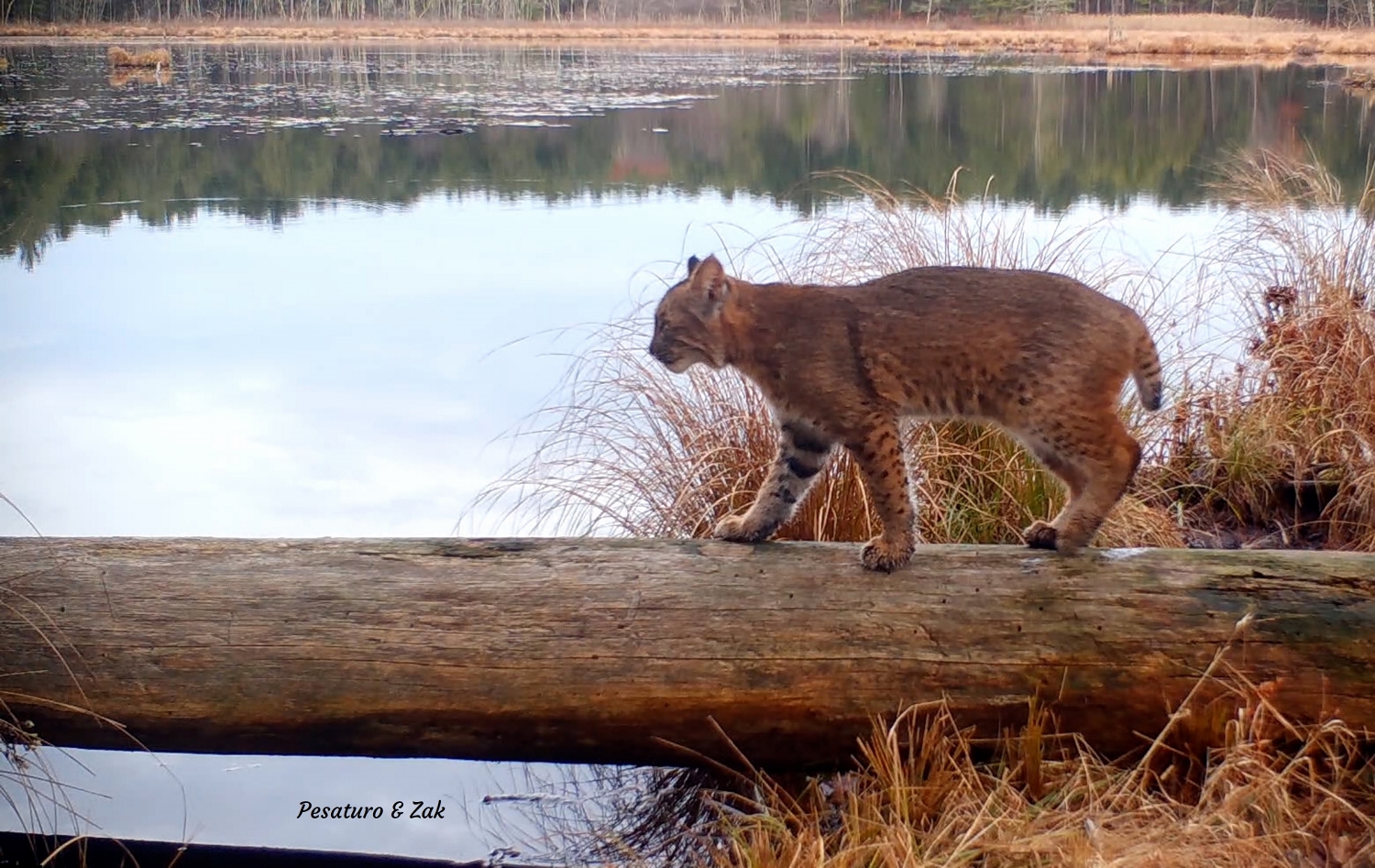
Like domestic cats, many wild felines “sharpen their claws” on surfaces – often carpets and furniture in the case of domestic cats, and logs and trees in the case of wild cats. In the house, it’s not hard to find what a pet cat is using as a scratch post but it is hard to find bobcat scratching posts in the wild. The reason for this has been a frequent topic of discussion among trackers and something I’ve wondered about a great deal. Do bobcats use scratch posts infrequently, or are we not recognizing the sign? Well, now that I have photos of a confirmed scratching log, I’m going to discuss this topic in excruciating detail: How and why cats do it, what these scratching posts and logs look like, and whether or not it’s an uncommon behavior among bobcats.
The Behavior
It is almost universally familiar due to the popularity of pet house cats but it’s worth analyzing the action in order to understand what kind of sign they leave behind on the tree, and to speculate why cats do it. They usually grasp the tree or log with extended forelegs as they lower the front of the body. The claws are extended and raked toward the body, leading to intermittent snagging of the nails and clawing the tree. Watch the video below of a bobcat in action.
The Purpose
Working a scratch post helps the cat shed the outer layers of the nails, keeping the claws fine and sharp. Some speculate that scratch posts might also leave olfactory and visual signals of social significance to other cats. See the studies under “Sources” at the end of this article. The scratch post may well become imbued with odor from the bottoms of the cats paws, but we don’t know how important that is for communication purposes. Visual signals could be important if the cat actually leaves identifable marks on the post, but do they?
The Appearance of Bobcat Scratching Posts and Logs
I was able to photograph the log in the above video the day after the cat scratched it. Now completely barkless, the log had been an eastern white pine tree. The sign is quite subtle, and if I hadn’t seen video evidence of the cat in action, I would never have been able to identify it as a cat scratching log with certainty. The log shows normal decay with nothing but a hint of splintering that I might have suspected was caused by a mammal clawing or rubbing. I don’t know if the subtlety of the sign on this log is typical but if it is, then it’s no surprise that bobcat scratch posts are so rarely found. The subtlety of the sign probably depends on how often the cat uses it, the size of the cat, and the tree species and condition of the tree, snag, or log.
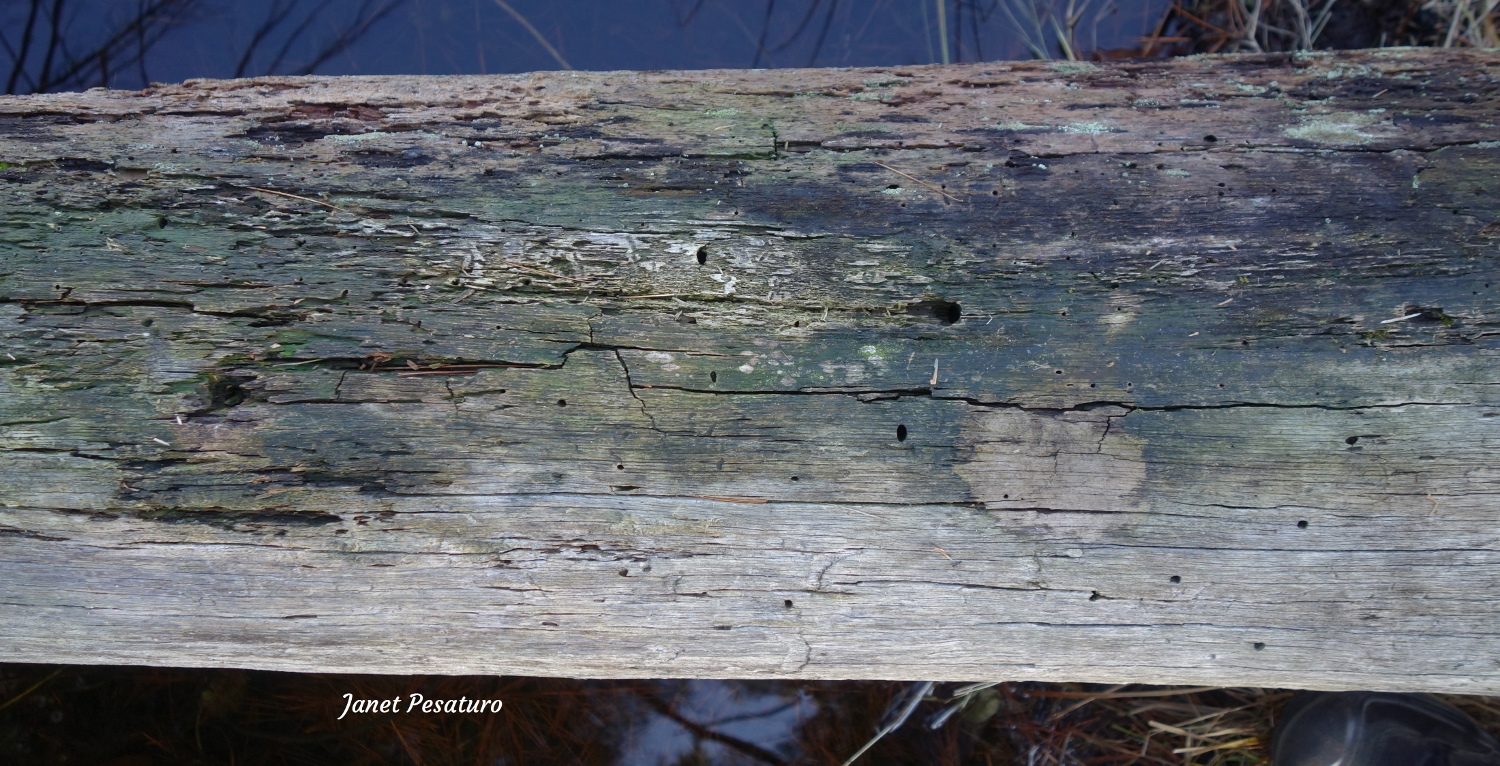
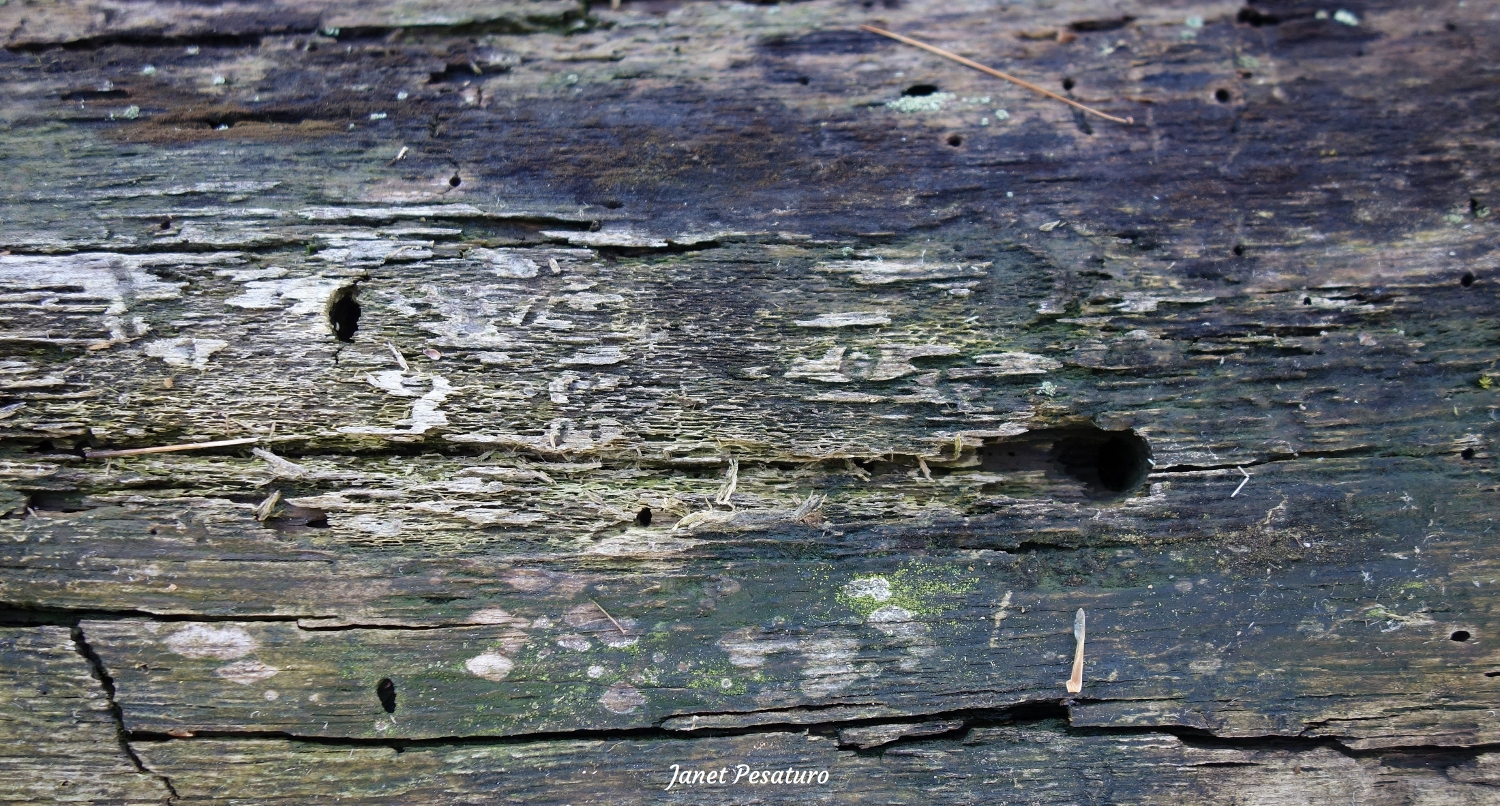
Factors that Influence Appearance
1. How often bobcats re-use scratch posts
House cat scratch posts often bear abundant sign because they tend to use the same posts repeatedly, and over time the accumulated sign becomes obvious. Indoor cats have limited options and cats with outdoor access tend to focus their activity around their humans’ home, a pattern I saw with my indoor/outdoor cats years ago. They loved to use the 4 cedar legs of a rustic pergola as scratch posts, and over the years the bark became conspicuously shredded where the cats scratched. But bobcats are wider ranging than most indoor/outdoor house cats so they have many more trees and logs to choose from and may not concentrate their scratch post activity they way domestic cats do. If they don’t, then very subtle sign could be typical.
2. Size of the cat
One might expect to see sets of parallel claw marks, smaller versions of what we see on bear marking trees or (less commonly found) mountain lion scratch posts or jaguar scratch posts. In fact, the 2 examples of bobcat scratch posts given in Elbroch and McFarland (2019) do show parallel claw marks, confirming that sometimes the cat does produce such marks. But the bobcat is small, so would not be expected to leave claw marks as deep or as long as those of the large cats or bears. When a bobcat does leave claw marks on scratch posts, they may be inconspicuous.
3. Tree species and condition
The nature of the bark and the degree of wood rot would affect the appearance of a scratch post. Envision what cat scratching might do to the thin bark of a healthy beech tree vs. the thick furrowed bark of a mature white pine vs. the soft, barkless wood of a rotting snag or log. Claw marks would probably show up really well on the beech…but maybe bobcats don’t often use beeches as scratch posts. I don’t know (and I don’t think anyone does) if they select for or against certain tree species. A rotting log or snag, on the other hand, might splinter or flake rather than register clean sets of parallel claw marks. That was the case in my example.
Distinguishing a Scratch Post from Other Sign on Trees and Logs
Deer antler rubs are sometimes mis-identified as cat scratch posts. I have seen this quite a few times in tracking discussion groups and believe that most trees said to be bobcat scratching posts are actually buck rubs. People mistake the gouges made by antler tines to be claw marks but these gouges are much broader than fine, sharp cat claws could possibly make. Here is an example of a white-tailed buck rub with the kind of gouges that trackers sometimes mistake for cat claw marks.
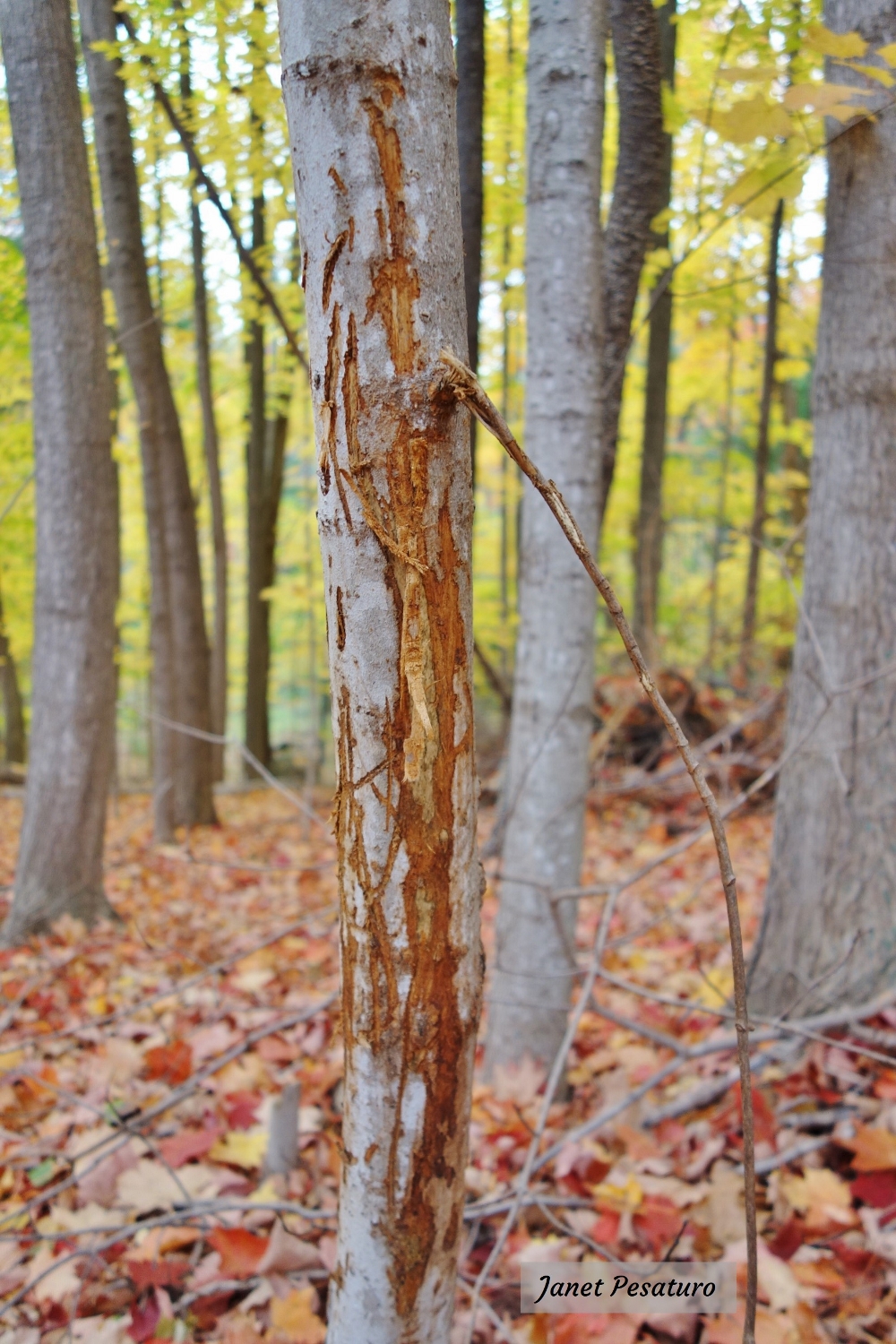
More Examples of Bobcat Scratching Posts
I suspect that bobcat use of scratch posts and logs is a rather common behavior because there are online videos of it, and several people in my trail camera group have posted incidentally captured videos of it. By “incidentally captured” I mean the behavior was not the intended target of the trail camera. For example, someone might target a certain log because they think wildlife use it for travel, come to find that a bobcat also uses it for scratching. Here are a few examples.
1. Bobcat and mountain lion scratch log by Ulli Limpitlaw
My bobcat scratching log might not be unique in its subtlety. Camera trapper Ulli Limpitlaw in Colorado targeted this log used for travel, and discovered that bobcats, a mountain lion, and house cats all use it as a scratch “post”. Here are some of her photos of the log. Notice that, like my log, hers is barkless and the sign left by the cats – despite repeated use – is subtle and nonspecific. Ulli found no sets of claw marks and if not for her trail camera videos, the splitting and splintering might be dismissed as normal decay.
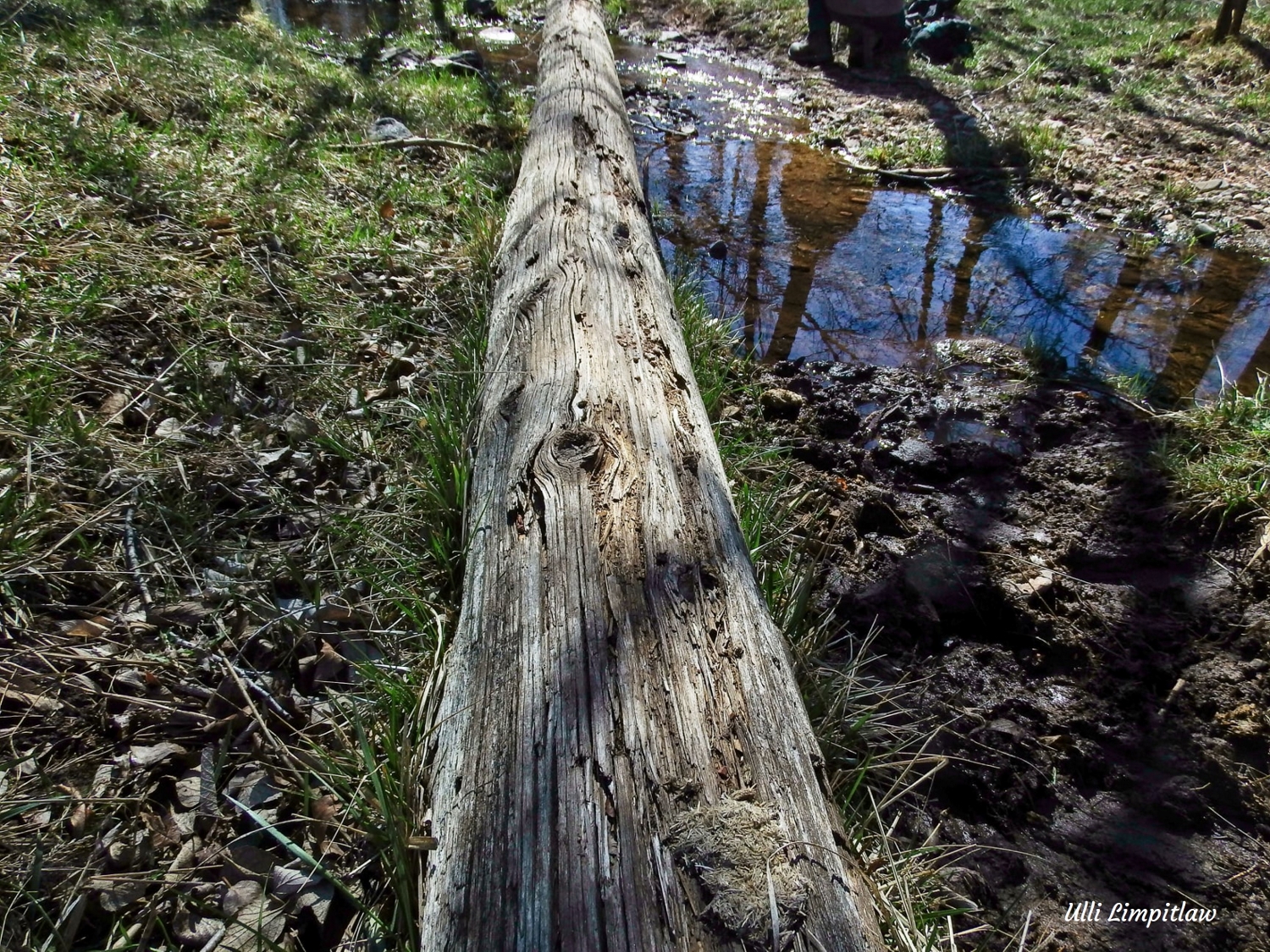
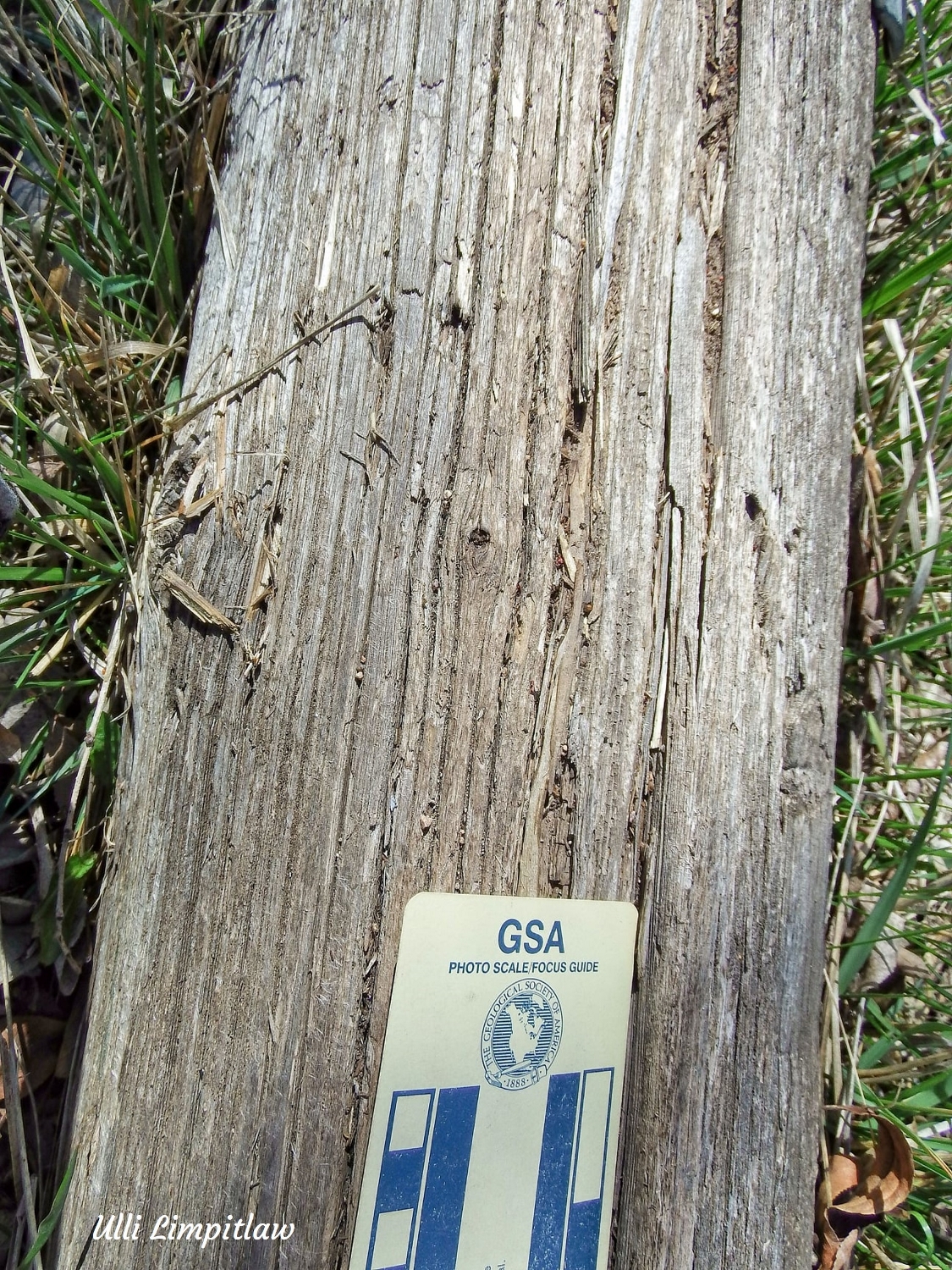
Ulli has several videos of cats working this log. Here are a couple of them:
Bobcat scratching the log
A single clip of the bobcat clawing the low end of the log.
Montage of both bobcats and a cougar scratching the log
This has 4 examples of cat clawing on the same log but they aren’t all at the same spot.
1. At 1 minute – bobcat almost out of view
2. At 1 minute and 16 seconds – bobcat at the low end of the log
3. At 2 minutes – bobcat at the high end of the log
4. At 2 minutes and 15 seconds – mountain lion at the mid section of the log. This large cat’s activity splinters off large pieces. Still, no sets of claw marks were detected.
It is interesting that the three cat species are using the same scratch post (the house cats are not shown in her videos). Does this indicate some kind of communication between the three species, or does it simply mean that they all prefer to scratch barkless logs that they use for convenient travel?
2. Bobcat scratching log by Santa Clara Open Space Authority
We cannot see the nature of this log (presence or absence of bark and the degree of decay) in the grainy black and white video below. But, the video is still useful in that its presence online suggests the behavior is probably not rare.
3. Bobcat kitten scratch post by Megoville
Lest I leave you will the impression that bobcats use only logs and not standing trees as scratch posts, here is a video of a bobcat kitten using a palm tree. And, if you click “Watch on Youtube” at lower left of the video, you will see that this person said they had noticed scratch marks on the tree! I sure would love to know what the looked like. Were they sets of parallel claw marks?
Conclusion
Bobcat scratching posts and logs sometimes (perhaps often) bear subtle, nonspecific sign that is easily overlooked or dismissed as normal decay. I suspect that is the reason trackers identify them so rarely. I doubt the behavior itself is rare, because it is captured incidentally by camera trappers every now and again. Based on the examples above, perhaps trackers should be looking for subtle splintering on barkless logs that wildlife use for travel. See Choosing a Good Bridge for a Trail Camera to find a log likely used for travel. Searching for sets of bobcat-sized parallel claw marks may be futile. Scratch post use does help shed the outer layers of the claw, but its importance as a visual and/or olfactory signal is unclear.
Have you ever found a wild feline’s scratching post or log? Please share your experience, thoughts, and questions in the comment section below.
Sources and Further Reading
Allen, M. L., C. F. Wallace and C. C. Wilmers. “Patterns in Bobcat (Lynx rufus) Scent Marking and Communication Behaviors.” J. Ethol. 33 (2015): 9-14.
These researchers found that scratch post use was much less common than scraping or spraying but, as they point out, their trail cameras were all targeting “community scrapes”, where multiple species, such as bobcats, mountain lions, coyotes, gray foxes, striped skunks and raccoons all scent mark. Cats use scratch posts in other areas, as well, resulting in an underestimation of this behavior in the study.
Elbroch, M. and C. McFarland, “Sign on Trees and Shrubs.” In Mammal Tracks & Sign: A Guide to North American Species, p. 264. Guilford, CT: Stackpole Books, 2019.
Mellen, Jill D. “A Comparative Analysis of Scent-Marking, Social and Reproductive Behavior in 20 Species of Small Cats (Felis).” Amer. Zool. 33 (1993): 151-166.
The author believes her study of captive felines supports the idea that scratch post use functions as a visual signal. She found that the behavior did occur in the vicinity of urine marking, and also sometimes used as a displacement behavior “when an estrous female repeatedly and vigorously threatened a male”. However, captive animals have far fewer options for scratch posts, and their behavior might not
Wemmer, C. and K. Scow. “Communication in the Felidae with Emphasis on Scent Marking and Contact Patterns.” In How Animals Communicate, edited by T. Seboek, 749-766. Bloomington, Indiana: Indiana University Press, 1977.
These authors speculate that “claw raking” on trees and logs leaves both olfactory and visual signals of social significance.

Cool post. Thanks
Glad you liked it, and thank you again for allowing me to use your photos and link to your videos!
Thank you for this article. Very interesting. From what I’ve read, cats, including bobcats and cougars, have scent glands between the toes of their paws. When they scratch a log or the trunk of a tree they are communicating with other cats regarding their territory and size. Based on the behaviour of my domestic cats, and also the number of cougar/bobcat scrapes I’ve found, I would imagine that log/trunk scratching/scent-marking is very common. It’s just that we humans don’t see them (and of course can’t smell them!) as you state in the article.
Yes, they may have specialized scent glands on the feet but I could not find documentation of that so I did not write about it. Even if they don’t, the feet could still convey unique information because the combination of the the cat’s sweat and bacteria on the bottoms of the feet could create slightly different odors on different individuals. Thanks for mentioning the glands, though. I debated whether to go into that but thought it might seem like too much of a digression to some readers. And I agree with you, scratch marking is probably very common among bobcats.
The glands are called “interdigital glands”. Here’s a reference: https://nystateparks.blog/2019/02/26/felines-in-the-northeast/ Scroll down to the cat diagram and “Territory Marking”. I did a google search on interdigital glands in bobcats and there really isn’t much. Anyway, I enjoyed your article. Thanks again for posting it.
Yes, but that is not a primary source and they do not give reference to any primary source. I was never able to track down a primary source in interdigital glands on the bobcat so cannot be sure these articles which state it as fact are accurate.
Good point! I agree.
Here’s some research on “tigers and other big cats” noting that they have interdigital glands as well. Interestingly though, even though the book was published in 2014, they state: “These scratch marks may also serve as communicatory signals. This theory is strengthened if we take into account the secretion of interdigital glands. Nothing is known at present regarding the olfactory signals of interdigital glands.” Scroll down to 15.6.3 I’m surprised that researchers haven’t looked much into the significance of these glands; at least it seems as if they haven’t. Here’s the link to the above excerpt: https://www.ncbi.nlm.nih.gov/books/NBK200978/
Yes but it doesn’t pertain specifically to bobcats, and they don’t reference a primary source even for big cats. I do sometimes quote these kinds of sources but I try to avoid it because I’ve found inaccuracies in the past, wherein it appears the authors were quoting assumptions that had been stated so many times before that they took it as fact. In fact the reason I wrote this post was that some trackers and tracking books propagate the assumption that bobcats don’t use scratch posts very often (as a way to explain why they rarely find bobcat scratch posts). I’m thinking that is false….that bobcats probably DO use them frequently but the sign they leave is too subtle or nonspecific to identify.
Yes. I know what you mean. In addition, I think it’s sometimes difficult to find primary sources, and when you do, the findings may be outdated in that more recent research says something entirely different. For example, cougars were thought to be solitary, but now people are finding that they can be quite social (you probably already know this). I’m glad your post challenges the assumption that bobcats don’t use scratch posts often. I hope I get some on my cameras and I’ll be sure to post them!
Great example about cougar social behavior. I believe it was camera trap studies that revealed that they are actually more social. What amazing tools these cameras are. I’d love to know about it if you do get a bobcat using a scratch post.
Living in bobcat country. My neighbor captured at least one bobcat on her game cameras so I searched for and found a scratch post (tree trunk) and took photos. Happy to share. Majestic animals, indeed.
I’d love to see the photos but it isn’t possible to upload photos in comments in this website platform. Could you go to “Contact” under “Home” in the top ribbon, and use the email address provided there? Thanks so much!